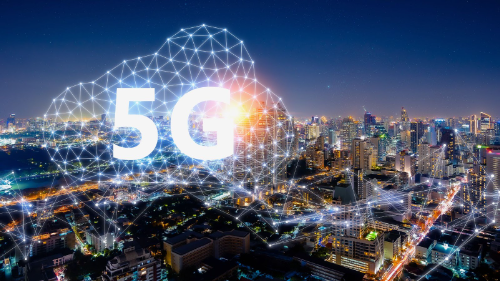A critical point in the development of telecommunications
The 5G transition marks a crucial moment in telecom evolution. As older generations phase out, new ones strive to establish themselves with the right infrastructure. Worldwide, telcos are embracing this change to meet customer expectations, despite the high initial costs.
The challenge lies in catering to diverse connectivity needs – providing 2G and 3G services to all while building 4G and 5G infrastructure. This necessitates a mix of architectures, like SMSC and MMSC based on SS7, and IPSM Gateway and SMSF for 4G/5G via diameter SGd. These architectures may reside on varied platforms—bare metal, virtual machines, or the Cloud. The real obstacle for network operators isn’t the what but the how.
G-generations are evolving. Globally, the push to retire 3G is evident, with most jurisdictions eyeing the next decade. 2G will persist in most countries, though some networks might abandon it. Operators might adopt 2G for IoT while others move on. Messaging’s future hinges on 4G and 5G expanding into business messaging and A2P.
The challenge is transitioning seamlessly, retaining functionality, and ensuring efficiency. Before delving deeper, let’s consider what’s at stake for telcos in the 5G landscape.

5G implications for SMS messaging
In truth, the motivation behind telcos’ investment in this substantial infrastructure lies in the untapped potential of 5G messaging. Across the board, network operators are witnessing opportunities for expansion. A prime instance is within business messaging, where a significant demand exists for enhanced customer communication avenues via messaging platforms.
The transition to 5G has several implications for SMS that are worth considering:
Higher Data Speeds
5G offers significantly higher data speeds compared to previous generations, which means that sending and receiving SMS messages might become even faster. However, it’s important to note that SMS itself is a relatively low-bandwidth service, and the increased speeds of 5G might not have a dramatic impact on SMS transmission times.
Increased Network Capacity
5G networks are designed to handle a larger number of connected devices simultaneously. This increased network capacity could lead to better reliability and reduced congestion for SMS services, ensuring that messages are delivered promptly even during times of high network usage.
Rich Communication Services
RCS is often seen as the successor to SMS. It brings multimedia and interactive capabilities to messaging, allowing for features like read receipts, typing indicators, high-resolution images and videos, and better group messaging. While RCS is not exclusive to 5G, the rollout of 5G networks might accelerate the adoption of RCS as network infrastructure improves.
Possible Decrease in SMS Relevance
With the advent of data-intensive messaging platforms like WhatsApp, Telegram, and iMessage, SMS has already seen a decrease in relevance as a primary messaging tool for many users. The higher speeds and capabilities of 5G might further accelerate this trend, as users increasingly prefer more feature-rich messaging apps over traditional SMS. So network operators may need to consider a more omni-channel approach to messaging and work with OTT players to present a more unified offering to their customers.
IoT and Machine-to-Machine Communication
One of the significant aspects of 5G is its ability to support a massive number of connected devices, which is crucial for IoT and M2M communication. While not the primary use case for SMS, the advancements in 5G could affect how SMS is used in these contexts, potentially leading to more reliable and efficient communication between IoT devices.
VoLTE Integration
5G networks are likely to incorporate Voice over VoLTE technology for voice calls. While not directly related to SMS, this technology shift might lead to an overall enhancement of the mobile communication experience, as the entire ecosystem evolves.
In summary, while the transition to 5G may not have a revolutionary impact on SMS as a messaging technology, it will likely lead to improvements in speed, reliability, and overall network capacity. However, the broader landscape of communication technologies, including the rise of data-driven messaging platforms, might continue to shape the way people communicate, potentially influencing the relevance of SMS in the long term.

Navigating the Transition to 5G Messaging: A Comprehensive Strategy Blueprint
As the telecommunications landscape propels towards the era of 5G, it becomes imperative for mobile network operators to meticulously outline a strategic pathway for the evolution of their messaging infrastructure. A well-crafted approach not only ensures a seamless transition but also capitalizes on the evolving opportunities while catering to the diverse needs of different user segments.
Safeguarding Ongoing 2G Utilization and IoT Proliferation
- In the pursuit of 5G expansion, it’s essential to ensure the persistence of existing 2G use cases, especially those involving IoT devices. These use cases not only remain a consistent revenue stream but also showcase the enduring value of legacy technologies. By keeping the SMSC optimized for 2G traffic, MNOs can effectively cater to this loyal user base, thereby securing ongoing financial stability.
Empowering 4G Engagement via an Enhanced IPSM Gateway
- Recognizing the continued significance of 4G connectivity, a robust IP Short Message (IPSM) Gateway emerges as a pivotal element of the strategy. MNOs must ensure that their IPSM Gateway is optimized to cater to the diverse messaging demands of 4G users. This optimization not only guarantees an enriched user experience but also provides an intermediary step towards the eventual 5G integration.
Adaptability in the Realm of 5G: Addressing SA and NSA Dynamics
- With the advent of both Standalone (SA) and Non-Standalone (NSA) 5G network architectures, adaptability becomes paramount. MNOs should engineer their Short Message Service Function (SMSF) to seamlessly operate in both SA and NSA contexts. This technological versatility assures MNOs the ability to serve a broader spectrum of users, regardless of the 5G deployment approach.
Bridging Generational Messaging: 4G to 5G Transition
- The transition from 4G to 5G messaging ecosystems is a critical juncture. MNOs must institute mechanisms within their SMSF that enable seamless communication between users on 4G and those embracing the new frontiers of 5G. This cohesion ensures that messaging remains a universally accessible medium, regardless of the network generation users are on.
In essence, the transition to 5G messaging is not merely a technological shift, but a strategic endeavor that encapsulates the past, present, and future of mobile communication. MNOs must strategically position themselves by upholding the significance of legacy technologies, fortifying their messaging gateways for existing networks, and agilely adapting to the dynamic landscape of 5G. This blueprint guarantees a steady revenue stream, optimized user experiences, and a versatile messaging infrastructure capable of connecting users across generations and network paradigms.
Messaging in a 5G world
If you would like to talk about 5G and the transition challenges ahead, why not reach out to us today? Our team of messaging experts can guide you through the journey from here to where you need to be.

